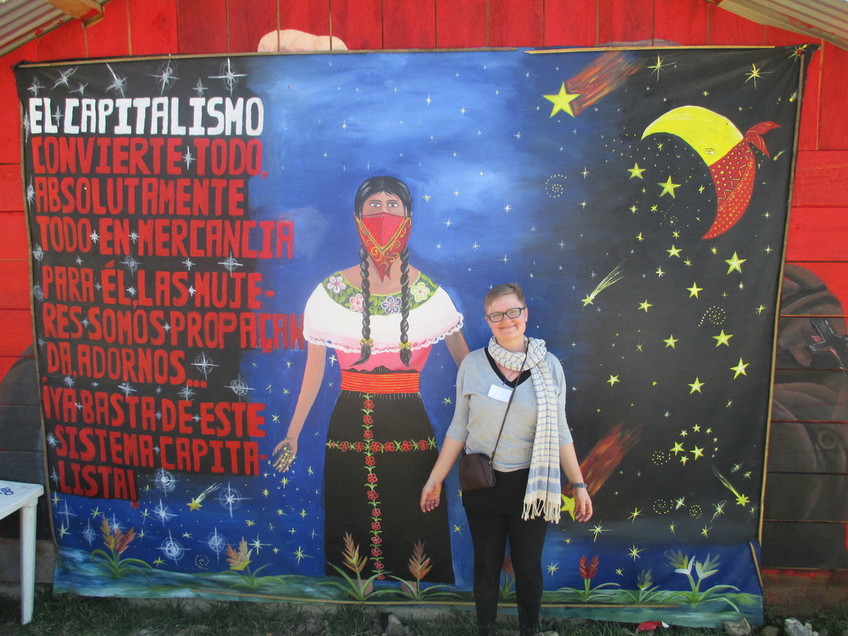|
I study contemporary Mexican and Latinx cultural production through the lens of gender, visual culture, performance, and border studies. I address questions of social justice and citizenship through readings of literature and public art that respond to policing in border spaces throughout the United States and Mexico. In my research, I identify the cultural workings of four systems that restrict women’s mobility on both sides of the U.S.-Mexico border. These systems are highways, prisons, factories, and the border wall infrastructure. In these spaces, I examine the ways in which the militarized logic of the border has replicated throughout both countries, concentrating on the racialized, gendered policing of belonging and movement. I analyze contemporary texts and images produced about, in, and on the surfaces of freeways, prisons, assembly plants, and border walls. In these spaces, cultural production operates as a means of challenging the criminalization of Chicana and Mexican women. The strategies of mobility enacted by border subjects in these visual and literary works assert fluid new forms of movement and discourses of belonging. Reading, for example, Judy Lucero’s poetry written from prison alongside women’s murals from Santa Marta Acatitla Prison, or the graffiti of Ciudad Juárez alongside its fiction, I examine how literature and public art speak to each other. My research, which simultaneously addresses the border aesthetically and politically, questions the distinction between Mexican and Latinx studies, framing Mexican studies as an inquiry into the cultural flows of Greater Mexico. This has led me to distinguish systems of regulation and networks of resistance that operate across national boundaries. My project places Mexican literature in dialogue with Latinx, gender, and visual culture studies. I foster interdisciplinary and transnational exchange by examining visual and literary works from the United States and Mexico as complementary texts. While international work about the border often overshadows local responses to the region’s violence and militarization, I prioritize border residents’ work in order to bring critical attention to the artistic voices that are most directly able to respond to their surrounding circumstances. I ground my readings in site-specific spatial analysis, and center local cultural production as politically engaged artistic practice. My study of border zones examines aesthetic work as a powerful tool of social change. Through my publications, I have situated myself within an expansive understanding of border studies that includes institutional spaces beyond the border wall region, and that prioritizes questions of gender, affect, policing, and embodied acts of protest. Today’s political rhetoric demonstrates the urgency of understanding borders. The focus, in the field and in media, is increasingly on the impacts of the border wall. While this is a crucial line of inquiry, it also serves as a distraction from the ways in which border security’s militarized logic proliferates discursively and materially beyond the geopolitical boundary. Whole landscapes of social and official checkpoints traverse the U.S. and Mexico, presenting obstacles to mobility and safety that disproportionately impact criminalized populations. My research probes sites of transnational crisis through these borderlands: the urban geography, prisons, factories, and walls where Mexican and U.S. government and corporate actors enact policies of fatal indifference and control that limit women’s mobility. My work centers aesthetic production as action that impacts border communities and restores empathy to create communities of solidarity. Link to full research statement |
